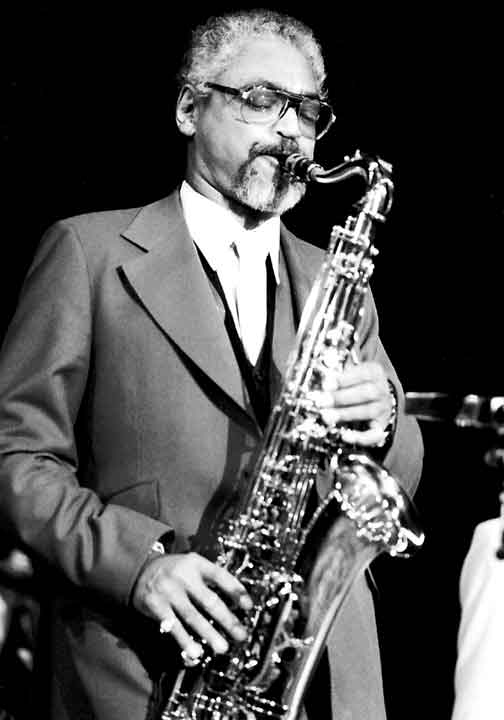Billy Mitchell—Legendary tenor man

Billy Mitchell, tenor saxophone
Billy Mitchell liked to tell people that music was a straightforward business: “There’s only 12 notes,” he would say, “and you just shuffle them around.” He shuffled those notes in highly effective fashion for a variety of great bandleaders: Jimmy Lunceford, Woody Herman, Dizzy Gillespie, and Count Basie.
Although he was an eloquent and fiery tenor saxophone soloist, Billy Mitchell was never taken to the bosom of the concert-going jazz public. The heavy-framed spectacles that he wore gave him a Mephistophelian look. The look was not deceptive. Billy didn’t suffer fools at all and made friends slowly.
His sound and approach to improvisation on tenor saxophone built on the great tenor players of the swing era, Lester Young and Coleman Hawkins, he extended the ideas of Charlie Parker and was often a member, and musical director of the Dizzy Gillespie big band which made historic tours to the Middle East and South America under the aegis of the State Department in 1956 and 1957.
Mitchell contrived an exciting and unusual combination of hard swing with bebop. This made him an ideal asset to a big band and his solos always had moment.
His life is an important but overlooked page in the history of jazz.
He was born Willie Melvin Mitchell on November 3, 1926 in Kansas City, but his family moved north to Detroit when he was still a small child. He began to play piano at six, took up clarinet at ten, finally decided on the tenor saxophone in high school, and was a professional touring musician by the time he was 17 with the Detroit-based band of Nat Towles, and then working in New York with Lucky Millinder in 1948. He played with several other name bands in the city, including Jimmy Lunceford, and he replaced Gene Ammons in Woody Herman’s bop-influenced big band in 1949. In 1949 Mitchell also recorded with the Milt Buckner band.
He returned to Detroit in the early 1950s, where he led his own band on the fertile jazz scene in that city, drawing on a pool of young talent which included pianist Tommy Flanagan, trumpeter Thad Jones and drummer Elvin Jones. He joined the Count Basie Orchestra in 1957, replacing Eddie “Lockjaw” Davis ,and remained with the band until 1961. He co-led a smaller group with fellow Basie bandsman Al Grey from 1962 to 1964, then rejoined the Basie group for 1966–7.
He was music director for Stevie Wonder in the late 1960s. Billy Mitchell had played in the original Clarke-Boland Big Band, a celebrated European outfit launched by expatriate American drummer Kenny Clarke and Belgian pianist Francy Boland, in 1963, and he joined the band again for a European tour in 1970. He worked with Gillespie again in another of the occasional revivals of the big band in 1975, acting as musical director as well as featured soloist.
He recorded 10 albums under his own name over his lengthy career, and appeared on many more. In addition, he was briefly an actor in the early 1940s, including an appearance in W. C. Fields’ famous film The Bank Dick in 1940. In the mid-1970s, he produced a film entitled The Marijuana Affair, with a jazz score by trombonist Melba Liston.
Much of his legacy lies in the musical guidance he gave to the next generation. When he worked with young musicians, ‘‘you could see the growth in their playing in a very short period of time,’’ said Bill Easley, now a well respected jazz saxophonist. As an educator during the 1970s, he taught and performed in community-based ventures like the Jazzmobile in Harlem, and in more formal settings in seminars at Hofstra University and Yale University.
He continued to tour in Europe and Japan into the 1990s, and spent 34 years as the resident saxophone star and jam session leader at Sonny’s Place in Seaford, New York, one of the last jazz strongholds. Sonny’s closed in 1997. Billy Mitchell led the last jam session and then retired.
Billy Mitchell passed on 18 April 2001 at his home in Rockville Centre, NY. He was 74.
